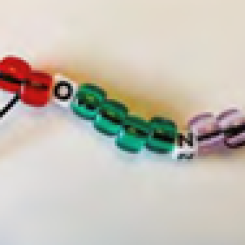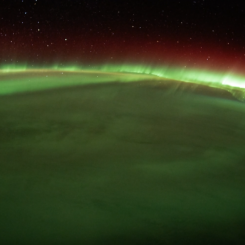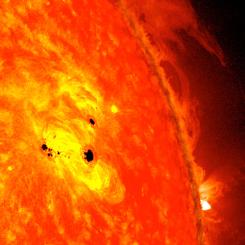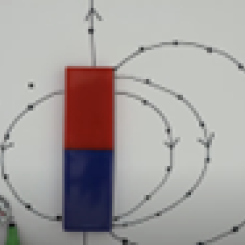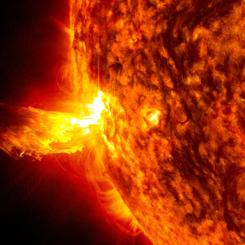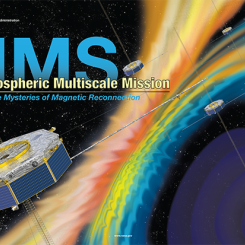Mini Lesson/Activity
Modeling the Heliosphere
Overview
This hands-on activity uses the kitchen sink to model the properties of the boundary of the heliosphere and takes learners through the scientific processes used in investigations: Making observations, using models, and communicating results.
Emphasize to learners that the image on the handout is not a picture NASA took, but rather was created from real data collected by NASA missions.
Scientists routinely use models to better understand phenomena. Colors can be added to these types of models to help us visualize what is going on.
Student Directions
Remember to never look directly at the Sun without proper safety equipment.
Review the The Heliosphere Graphic Handout.
The heliosphere has different parts, depending on how it interacts with the boundary of interstellar space. We know this from NASA missions like Voyager and IBEX, which have measured this boundary.

Examine:
The Heliosphere Graphic image was created from a 3D model of the heliosphere using actual data collected by the IBEX mission. Colors are meant to enhance features and show structure. The solar wind is represented by the greenish, wavy lines coming out from the Sun. The heliopause is the outermost boundary of the heliosphere. Beyond the heliopause is interstellar space. The termination shock is the innermost boundary of the heliosphere, where the solar wind begins to interact with interstellar space. The termination shock is still inside the heliosphere. The heliosphere creates a bow wave because the Sun is moving through interstellar space, as it orbits the center of the Milky Way galaxy. Just like how a bow wave is created as a boat moves through the water.
- What do you notice about the boundary?
- What shape is it?
Model
Use a waterproof image and a sink to model parts of the heliosphere.
Show the Modeling the Heliosphere Video and follow the directions to construct the model.
If you laminate the handout, skip the instructions for wrapping the handout in plastic wrap.
Share Results
Record your results. Include drawings and diagrams and note any modifications you made in order to perfect the model, perhaps adjusting the water pressure or the position of the image, for example.
Answer the following questions:
- How does this model help us learn about the properties (characteristics) of the solar wind and the heliosphere boundary?
- Why would a soap bubble not be an appropriate model for the heliosphere?
Allow time for learners to reflect and share their answers.
Teacher Note
Emphasize to learners that the image on the handout is not a picture NASA took, but rather was created from real data collected by NASA missions.
Encourage learners to record observations and draw diagrams, like real scientists and engineers do.
In anticipation of questions on exactly what interstellar space is made of, you can tell learners that: Interstellar space is the space between the stars in our Milky Way and contains a cold gas of mostly hydrogen atoms mixed together with a hot gas consisting of plasma.
Teachers, these mini lessons/student activities are perfect "warm up" tasks that can be used as a hook, bell ringer, exit slip, etc. They take less than a class period to complete. Learn more on the "My NASA Data What are Mini Lessons?" page.
Teachers who are interested in receiving the answer key, please complete the Teacher Key Request and Verification Form. We verify that requestors are teachers prior to sending access to the answer keys as we’ve had many students try to pass as teachers to gain access.
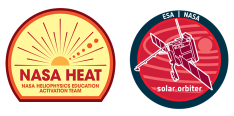
Disciplinary Core Ideas:
- PS2B: Types of Interactions
- ESS1A: The Universe and its Stars
Crosscutting Concepts:
- Patterns
- Cause and Effect
Science and Engineering Practices:
- Developing and Using Models

